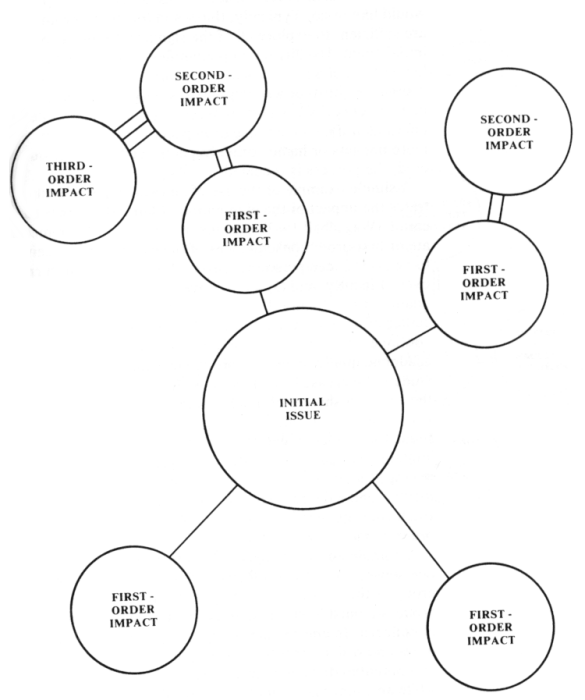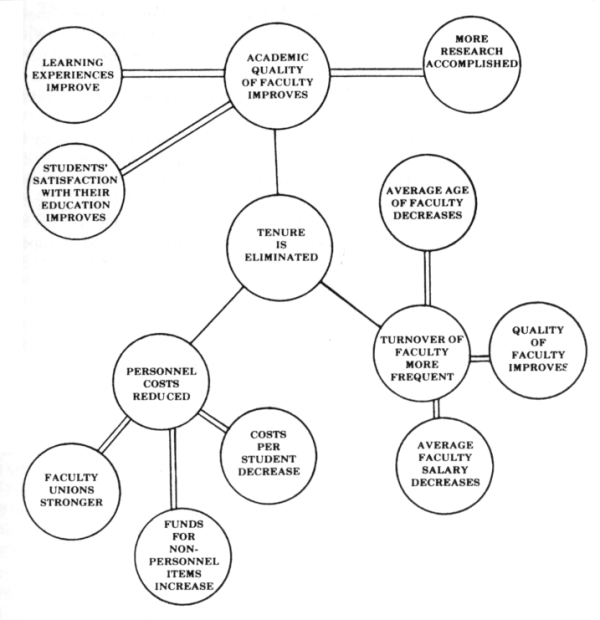|
|
 |
||
|
|
|||
|
Developing scenarios using the impact network In this exercise, we will be developing an an elementary scenario using a technique known as the impact network as described in Morrison, Renfro, and Boucher (1984). An impact network (a technique designed to identify potential impacts of key events on future developments) is generated by identifying the possible effects of a given specific event. The procedure is quite simple. Any impact that is likely to result from the event, whether negative or positive, is an "acceptable impact." The question is one of possibility, not probability. In an impact network, the initial event is written in a circle in the middle of the page; each first-order impact is written in a circle that is linked to the initial event by a single line; each second-order impact is written in a circle that is linked to the first-impact by a double line; each third-order impact event is written in a circle that is linked to the second-order impact event by a triple line; and so on (see Figure 1). Typically, third- and fourth-order impacts are sufficient to explore all of the significant impacts of the initial event. Also, after identifying third- and forth-order impact, feedback loops may become apparent. For instance, a fourth-order impact might increase or decrease a third- or a second-order impact. If more impacts or higher-order impacts need to be considered, a new network diagram is created. The value of impact networks lies in their simplicity and in their potential to identify a wide range of impacts very quickly.
A completed impact network is often very revealing. In one sense, it serves as a Rorschach test of the scenario team because the members of the team are most likely to identify impacts highlighting areas of their concern. In another sense, by trying to specify the range of second-order impacts, new insights into the total impact of a potential development can be identified. Though an event may stimulate a majority of small, positive, first-order impacts, these first-order impacts may stimulate a wide range of predominantly negative second-order impacts that in total would substantially reduce, if not eliminate, the positive value of the first-order impacts. Feedback loops may promote the growth of an impact that would far outweigh the original estimate of its importance. Example:
Figure 2. An Impact Network: The Consequences of Task: Develop an impact network for the most critical event affect the future of agricultural programs in land-grant institutions Write the initial issue in a circle in the center of a blank flip-chart page. Then, identify five or six first-order impacts until the space around the initial event is occupied. Next, identify the second order impacts by repeating the process for each first-order impact identified by the team. Again, the task is to determine the possible impacts if this event were to occur. Repeat these steps for third- and fourth-order impacts, or as far as the team would like to go. Also, be aware of any feedback loops between levels of impact. Be prepared to discuss the impact network with the entire conference. Reference Morrison, J. L., Renfro, W. L., and Boucher, W. I. (1984). Futures Research and the Strategic Planning Process. ASHE/ERIC Clearinghouse on Higher Education Research Report Series Number 9. | |||

